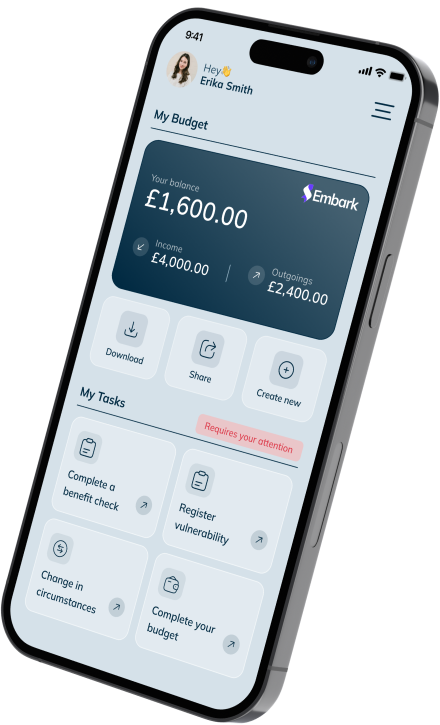In my last article, I talked about how firms can use the FCA Rules and Guidelines on Persistent Debt as an opportunity to transform their collections process.
Processes to tackle Persistent Debt are now being put in place and millions of consumers across the UK have been – or are being contacted – about their financial situations. Our understanding is that there has been limited response so far as a result of communications being sent by card providers to customers deemed to be in Persistent Debt and we feel that awareness still needs to be raised both to consumers and across the industry about why the FCA has put these guidelines in place. This will ensure consumers are encouraged to respond to creditors’ communications – and work with them to make sure they’re provided with the most suitable solution.
Background
The Persistent Debt initiative initially focused on credit card consumers – however, the FCA is also putting parameters in place to review the affordability of people who on the face of it seem to be struggling to pay off their overdrafts. (click here to view PS19/16: High-Cost Credit Review: Overdraft policy statement and its associated documents). It appears people who are constantly living in the red and struggling to pay off their overdraft could also deemed to be in Persistent Debt. Out of the 52 million people who have a UK current account, two thirds have overdrafts, which are either arranged or unarranged.
The exact figure of how many people are in overdraft Persistent Debt is unknown – however, the FCA clearly assumes there’s a large enough proportion of these people who have been stuck in the red for too long, which warrants its request for banks and building societies to contact these customers.
Given the scale of the number of customers potentially in scope, the operational and financial implications are significant. Yes, the process is the same as Persistent Debt, in terms of contacting consumers, reviewing their financial circumstances and offering a solution – however, additional resource will be required to identify and engage with these people.
What is the FCA asking banks and building societies to do?
The regulators’ ‘overdraft pricing and competition remedies’ policy statement is asking all banks and building societies to do more to identify customers who are showing signs of financial strain or are in financial difficulty and develop and implement a strategy to reduce overdraft use.
The FCA has commented: “Our analysis showed that fundamental reform of overdrafts was required. The changes we are making today will reform the market, and lead to significantly improved outcomes for millions of overdraft users.”
Although the original deadline to implement the rules was April 2020, the FCA has brought it forward to 18 December due to the apparent financial harm being endured by existing consumers living in their overdrafts. Time is clearly of the essence!
The FCA has asked banks and building societies to investigate consumers’ use of their overdrafts after discovering there is currently a lack of effective communication and support for those who are under financial strain.
According to the FCA, banks and building societies need to identify consumers who are living in their overdrafts as these people are more likely to be struggling with their finances than those in the black. These people should then be contacted to review their circumstances and determine whether they need further support, such as debt advice on how to manage their finances. The regulator wants more early intervention to prevent these people’s debt spiraling out of control.
The FCA also believes communication to these customers could be improved as existing methods are not as effective as they could be. Currently the onus is on customers to respond to letters by calling banks and taking part in an affordability assessment, which can be lengthy and off-putting. Plus, these letters are often unread or misunderstood, which can again affect response rates.
Regulatory Requirements
Banks and Building Societies have been asked to develop strategies that reduce customers’ repeat use of their overdrafts, which aim to flag those who are at risk of financial difficulty and reduce the impact the repeat use of their overdraft could have on their personal circumstances.’
As part of these strategies, firms need to include policies, procedures and systems to monitor customers’ overdraft use and identify repeat users further identifying those who could be deemed to be in financial difficulty.
If customers are identified to be in financial difficulty firms must seek dialogue with these people, and present options for reducing their overdraft use, whilst explaining that if the issue continues, their overdrafts may be suspended or removed – unless that would worsen their financial positions.
If customers are classed as repeat users, firms must make contact, highlight their pattern of use and explain how this may mean they end up facing high and unavoidable costs in the future. If these customers continue with this pattern of behaviour, the firm must contact the customers again after a reasonable time – and then annually if their situations remain the same.
Like Persistent Debt for credit cards, banks and building societies need to report the outcomes of their 6 and 12 month reviews to the FCA – including details of any change to the total number of repeat overdraft users, the total size of customers’ overdraft balances and any other relevant background information.
As we know from Persistent Debt, gathering information on people’s financial circumstances over the phone is time consuming and could be a reason why customers aren’t responding to the persistent debt letters – which again could be missed.
Automating this process would make sure data is gathered more quickly and accurately, which could not only increase response and engagement rates, but also mean more people are provided with additional support and referred for debt advice.
How can we help?
Paylink software has already transformed the way several major UK banks and Building Societies are helping customers in financial difficulty. Our solutions make the income and expenditure and debt referral processes as quick, accurate, convenient and secure as possible for customers. Our Clients are using our solutions to help drive customer engagement and support those customers in Persistent Debt and repeat overdraft use.
In our next article, my colleague – Rich Healey (Product Development Director – Paylink Solutions) will be writing about how our partners are carrying out their persistent debt strategies – and how important our software has been in making sure they’re sustainable. Look out for his article soon and in the meantime I’d love to hear your thoughts on how you feel the initiatives surrounding the implementation of Persistent Debt combat strategies has affected the industry and the consumer.








